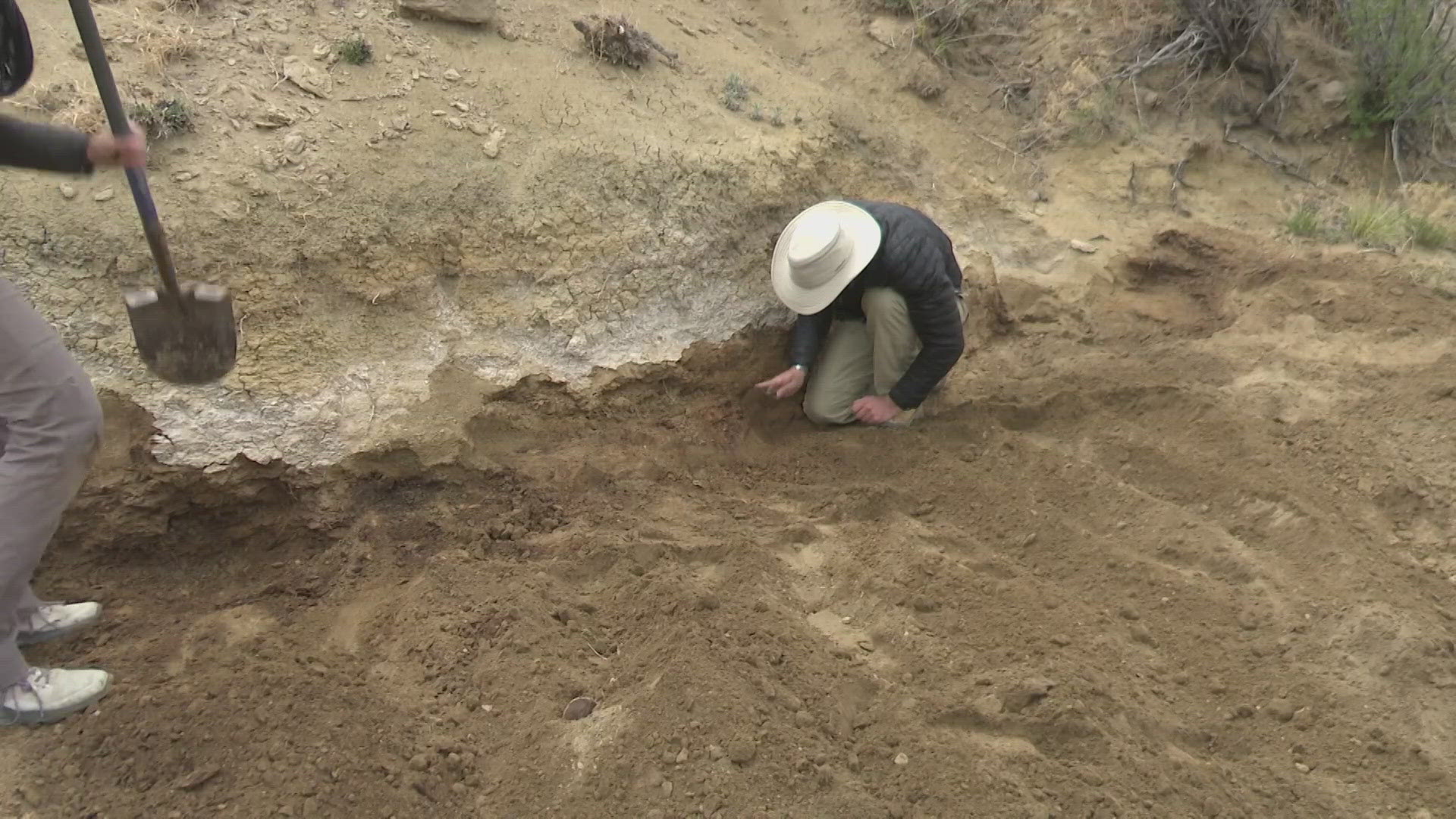COLORADO SPRINGS, Colo. — Colorado researchers discovered fossils of a new species of mammal at a site on the edge of Colorado Springs.
The Denver Museum of Nature & Science researchers announced the discovery of the 65-million-year-old mammal on Friday and said it was collected in the Corral Bluffs area on the edge of Colorado Springs.
The newly discovered species, named Militocodon lydae, is part of a group of animals that gave rise to all modern hoofed mammals, including deer, cows and pigs, the museum said.
The fossil skull and jaws of Militocodon lydae were uncovered from rocks dating back to just after the extinction of the dinosaurs. Roughly the size of a chinchilla, Militocodon lydae provides important clues about the explosive diversification of mammals in the wake of the dinosaur extinction.


The researchers named the mammal Militocodon lydae in honor of two extraordinary contributors to the Corral Bluffs project: volunteer and retired Colorado Springs teacher Sharon Milito and Museum supporter and champion of Colorado Springs Lyda Hill.
"Rocks from this interval of time have a notoriously poor fossil record and the discovery and description of a fossil mammal skull is an important step forward in documenting the earliest diversification of mammals after Earth’s last mass extinction,” said Dr. Tyler Lyson, Museum Curator of Vertebrate Paleontology.


How and when life rebounded in the aftermath of the extinction of the dinosaurs has been shrouded in mystery due to a poor fossil record. But thanks to an extraordinary discovery of remarkably complete fossils from Corral Bluffs, as well a recently awarded collaborative research grant from the National Science Foundation's Frontier Research in Earth Sciences, Museum scientists and collaborators are now able to paint a vivid picture of how and when life rebounded after Earth’s darkest hour.
The study, published in April 2024, was led by Dr. Lucas Weaver, Kent State University, and Jordan Crowell, The Graduate Center, City University of New York.
SUGGESTED VIDEOS: Animals and Wildlife

